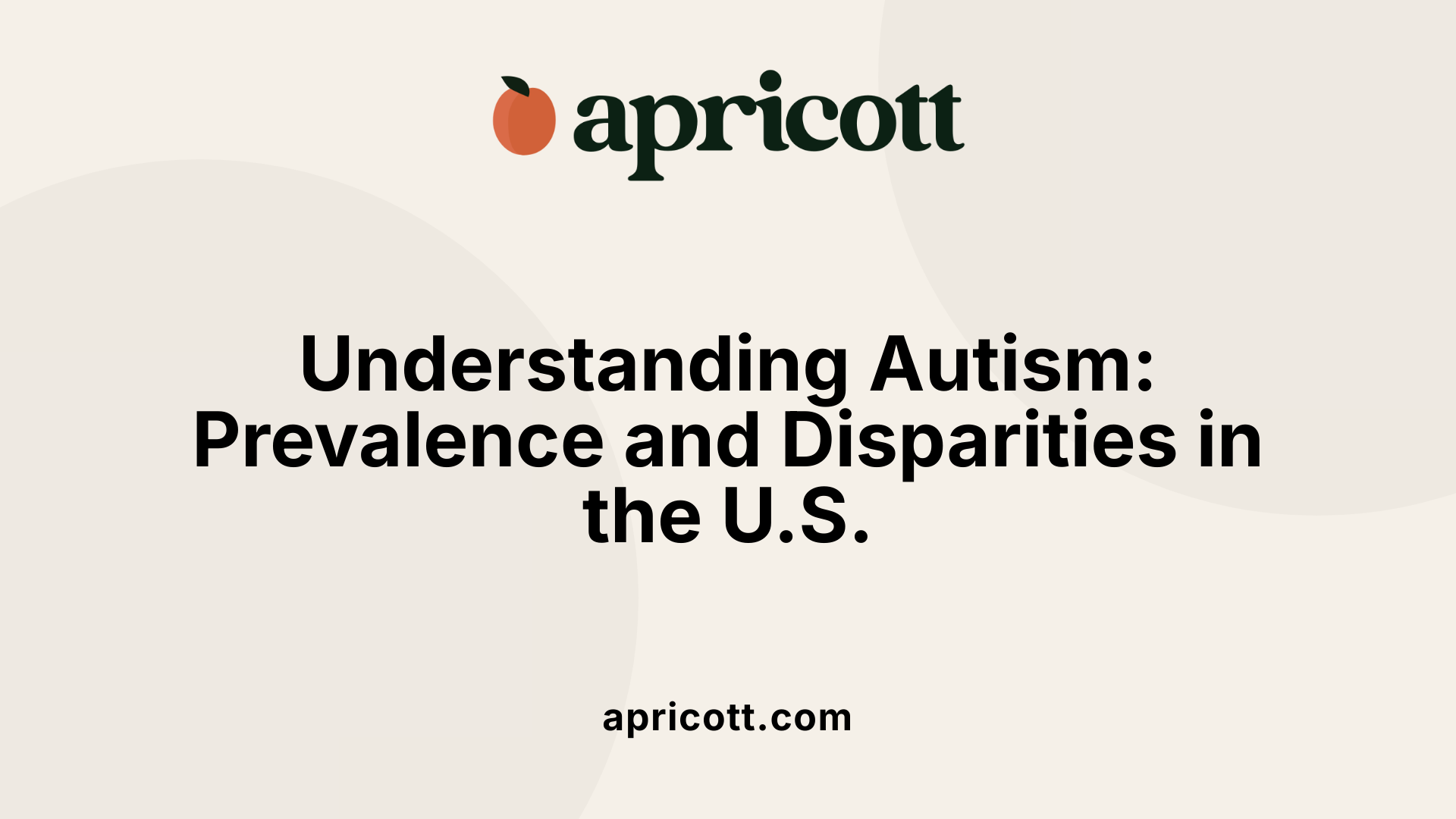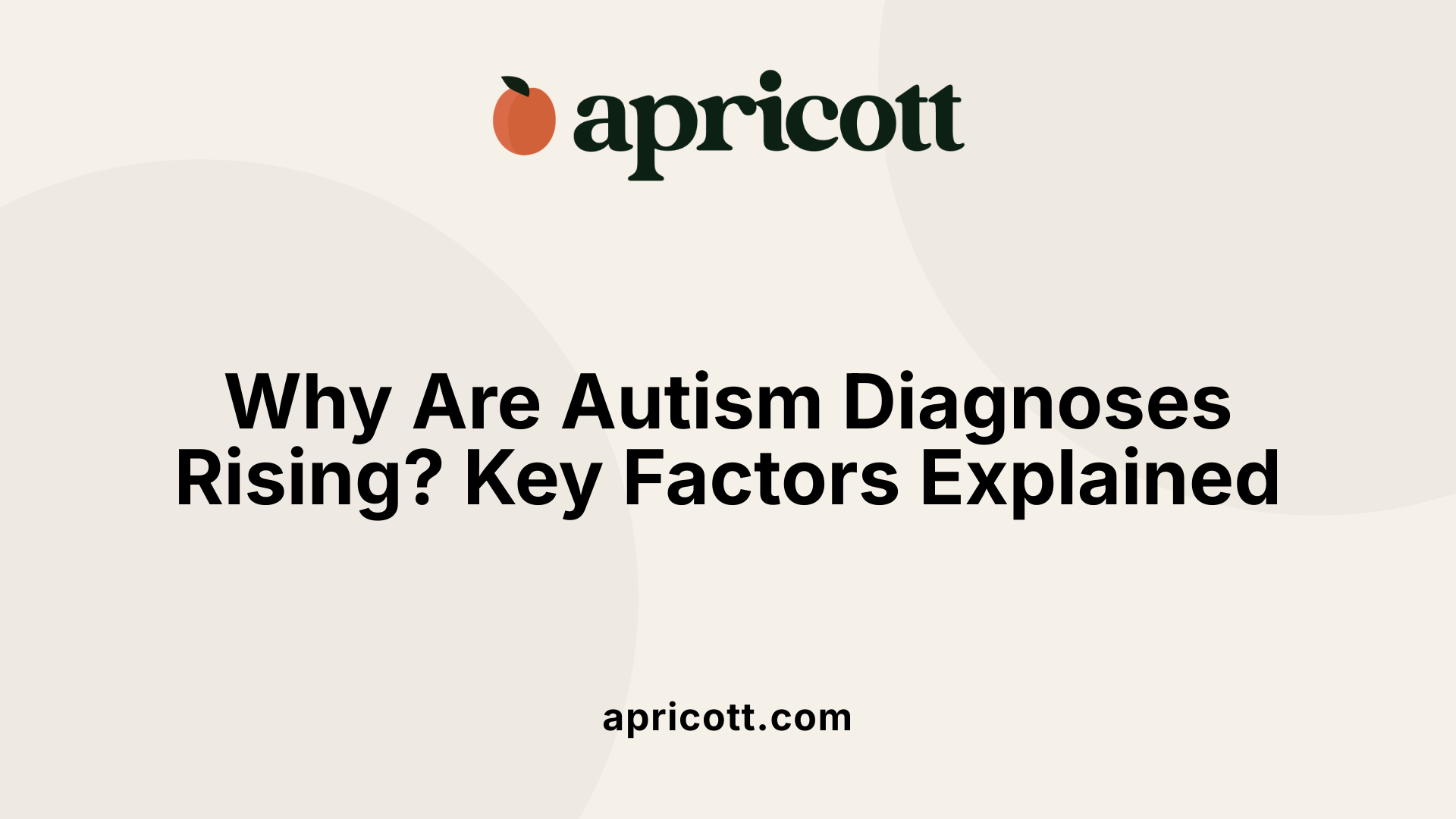July 21, 2025
Rising Trends and Key Insights into Autism Spectrum Disorder in the U.S.
Autism Spectrum Disorder (ASD) continues to be a significant public health focus in the United States, with evolving data highlighting an increase in diagnosed cases across all regions and demographics. This article explores the current landscape of autism in the U.S., examining prevalence rates, contributing factors, healthcare considerations, research advancements, and community support systems, providing a comprehensive overview of this complex neurodevelopmental condition.

Recent data from 2022 and 2025 indicates that approximately 1 in 31 children in the U.S. has been diagnosed with autism spectrum disorder (ASD). This represents a rise from previous figures, such as 1 in 36 children. The increase in diagnosis rates is largely attributed to better detection, broader screening practices, and increased awareness rather than an actual surge in cases.
Among children aged 4, the prevalence is about 1 in 34 (2.9%). These estimates span across various racial and ethnic groups, with minority children showing higher rates. Specifically, Black, Hispanic, Asian or Pacific Islander, and American Indian or Alaska Native children tend to have higher ASD prevalence compared to white children.
Boys are diagnosed with autism far more often than girls, with a ratio of nearly 3.4 to 1. In terms of age, the median age at diagnosis is around 47 months, or roughly four years, highlighting the importance of early screening and intervention.
Regarding racial and ethnic differences, the prevalence in Black, Hispanic, Asian, and Native American children exceeds that of white children, indicating disparities that may be influenced by factors such as access to services and screening programs.
In summary, autism prevalence continues to grow across the U.S., with ongoing efforts to improve early identification and address disparities among different demographic groups. The trend underscores the importance of continuing research, public health initiatives, and community support to meet the needs of all children affected by ASD.
For further details, search using the query: latest autism prevalence U.S. 2025.

The increase in autism diagnosis rates in the United States is largely due to changes in how autism is diagnosed, along with heightened awareness and screening efforts. Over the years, diagnostic criteria have expanded to include a broader spectrum of symptoms and conditions, such as Asperger syndrome, especially following updates to the DSM-5 in 2013. This broadening means more children fall under the autism diagnosis.
In addition, public awareness campaigns and education initiatives have made parents, teachers, and healthcare providers more vigilant. Routine screening recommendations by the American Academy of Pediatrics encourage early detection, which contributes to higher identification rates.
Regional differences also play a role. Some states, like California, have more aggressive early screening programs, leading to higher reported prevalence compared to other areas with limited access or different screening practices.
While genetic factors, such as older parental age or genetic predispositions, influence individual risk, the rapid rise in diagnoses mostly reflects improved detection. Environmental factors may also contribute, but evidence is less conclusive about their role in the increasing prevalence.
Overall, the rise represents better diagnostic tools, increased public awareness, and policy-driven efforts to identify autism early, rather than a sudden epidemic of new cases.
 Several U.S. states stand out for their reported high prevalence rates of autism, notably California, New Jersey, Maryland, and Massachusetts. California, for instance, reports an estimated autism prevalence as high as 1 in 22 children, which is significantly above the national average. These variations are influenced by multiple factors.
Several U.S. states stand out for their reported high prevalence rates of autism, notably California, New Jersey, Maryland, and Massachusetts. California, for instance, reports an estimated autism prevalence as high as 1 in 22 children, which is significantly above the national average. These variations are influenced by multiple factors.
Access to healthcare and early screening programs plays a crucial role in high reporting rates. States with more developed healthcare infrastructure tend to identify and diagnose autism earlier and more accurately. Public awareness campaigns and proactive screening initiatives contribute to increased detection, especially among communities with greater healthcare resources.
Regional policies also significantly impact autism diagnosis and support services. States that have implemented inclusive educational policies, comprehensive health insurance coverage, and targeted intervention programs tend to have higher reported prevalence. Such policies encourage families to seek evaluations and facilitate access to early services.
Sociodemographic disparities, including differences in race, ethnicity, and socioeconomic status, influence prevalence reports. While higher detection rates in affluent areas may reflect better access, they also highlight persistent disparities where minority and lower-income families might face barriers to diagnosis. Environmental factors and regional socioeconomic patterns further shape the landscape of autism prevalence.
Overall, higher rates observed in certain states often mirror the availability of resources, awareness, and supportive policies rather than an actual difference in autism occurrence. This underscores the importance of equitable access to diagnostic and intervention services nationwide.
| State | Reported Prevalence | Influencing Factors | Additional Notes |
|---|---|---|---|
| California | About 1 in 22 children | Healthcare access, awareness, screening programs | Highest reported rate in the U.S. |
| New Jersey | High prevalence | State policies, early detection services | Strong early intervention initiatives |
| Maryland | Elevated prevalence | Diagnosis infrastructure, regional health policies | Median age of diagnosis around 4 years |
| Massachusetts | Noted for high rates | Educational support, healthcare programs | Focus on early screening and intervention |
For more detailed data, searching "state-wise autism prevalence U.S." provides comprehensive reports and updates.
Autism spectrum disorder (ASD) is a neurological developmental condition that affects social interaction, communication, learning, and behavior. It is typically diagnosed early in life, often before the age of 5, and presents a wide range of abilities and challenges.
In the United States, approximately 1 in 100 children is diagnosed with autism, with rates increasing over recent years due to better detection and broader diagnostic criteria. The prevalence varies across regions and racial/ethnic groups, with higher incidence observed among boys—about four times more than girls—and among minority groups such as Black, Hispanic, and Asian children.
Healthcare considerations for individuals with autism include the importance of early screening and intervention. Early diagnosis can lead to more effective support and improved outcomes. Common co-occurring conditions include epilepsy, ADHD, gastrointestinal issues, anxiety, and sleep disorders. Tailored healthcare services are essential to address these needs.
However, access to healthcare remains a challenge for many autistic individuals in the U.S. due to barriers such as high costs, shortages of qualified providers, and disparities in services based on socioeconomic and geographic factors. This can impact management, access to therapies, and overall health outcomes.
Societal attitudes and policy initiatives play a crucial role in improving the quality of life for autistic individuals. Efforts to promote acceptance, inclusive practices, and equitable healthcare are ongoing, aiming to reduce disparities and enhance support systems.
Available services include early intervention programs, speech and behavioral therapies, personalized healthcare plans, and educational support, which are vital for fostering developmental progress and community integration.
| Characteristic | Description | Additional Details |
|---|---|---|
| Prevalence | About 1 in 100 children | Higher among boys and minority populations |
| Common Co-occurring Disorders | Epilepsy, ADHD, sleep issues | Require integrated healthcare approaches |
| Early Signs | Social communication delays and repetitive behaviors | Detection as early as 24 months |
| Barriers to Care | Cost, provider shortages, disparities | Impact access and health outcomes |
| Support Services | Speech, behavioral therapies, early screening | Critical for developmental progress |
Recognizing these factors is essential for improving services and outcomes for the autism community in the U.S. Early detection, tailored therapies, and overcoming healthcare barriers are vital components of comprehensive care for autistic individuals.
 Current autism research in the U.S. is increasingly focused on uncovering the biological, environmental, and neurological factors that contribute to the condition. Large-scale genetic studies have identified over 230 genes linked to autism, helping researchers understand the diverse subtypes of the disorder. These advances are guiding the development of more precise screening tools and biomarkers for earlier detection.
Current autism research in the U.S. is increasingly focused on uncovering the biological, environmental, and neurological factors that contribute to the condition. Large-scale genetic studies have identified over 230 genes linked to autism, helping researchers understand the diverse subtypes of the disorder. These advances are guiding the development of more precise screening tools and biomarkers for earlier detection.
Surveillance data from sources like the CDC reveal that about 1 in 31 children are affected by autism, with higher prevalence among boys than girls, and notable variations across racial and socioeconomic groups. This highlights ongoing challenges in achieving equitable access to diagnosis and services.
Technological innovations are transforming intervention methods. AI-driven diagnostic tools improve accuracy, while virtual reality (VR) and wearable devices are being used to tailor therapies and monitor progress effectively. Such tools support early intervention efforts, which are crucial for better outcomes.
Federal agencies like the NIH support multidisciplinary research that emphasizes the importance of personalized approaches. Increasingly, research is centered on neurodiversity and strengths-based strategies, aiming to support individuals across the spectrum, including those with severe autism and older adults.
The future of autism research and services in the U.S. involves integrating biological insights with technological progress and social understanding. These efforts strive to improve early detection, develop supportive interventions, and promote inclusion and full community participation for people with autism.
| Research Area | Recent Advances | Future Focus |
|---|---|---|
| Genetics | Over 230 genes identified | Personalized treatments |
| Diagnostics | Biomarker development | Early screening tools |
| Technology | AI, VR, wearables in therapy | Expanding access and accuracy |
| Policy & Support | Inclusive policies | Equity in diagnosis and services |
| Populations | Focus on severe autism & aging | Lifelong support strategies |
The landscape of autism in the U.S. continues to evolve, marked by rising prevalence, greater awareness, and expanding resources. Addressing disparities, enhancing early diagnosis, and supporting lifelong health and employment are crucial for improving outcomes. Ongoing research, policy initiatives, and community programs are vital for fostering an inclusive environment that celebrates neurodiversity and ensures equitable access to services. As understanding deepens and societal awareness broadens, the future promises more tailored support systems and greater acceptance for individuals on the autism spectrum across America.